
Grace Mitchell (1868-1953) was raised in Aberdeen, and exhibited her early work with the Aberdeen Artists Society. Leaving Aberdeen around 1899, she pursued her artistic studies in Brussels in the Ernest Blanc Garic Academy. The Academy accepted female students, but they had to use a separate entrance. In Paris, she attended the Decluse Academy, and then the Academy Julian where she met Paul Henry. Through Paul Henry, the American artist James McNeill Whistler came to influence her work, leading to the prevalence of nocturnal scenes and affecting her choice both of subject and colour.
Her painting The Girl in White (1912 Hugh Lane Gallery, Dublin) is reminiscent of Whistler’s Symphony in White, No. 1: The White Girl (1862, National Gallery of Art, Washington) in its subject, its controlled brushwork and as a tonal study.
Paul Henry and Grace Mitchell were married in London in 1903, having moved there a couple of years earlier to further their artistic careers. Their trip to Achill in 1910, intended to last a fortnight, became a nine-year stay. Both artists painted extensively during these years, but in very different styles. Paul Henry’s Irish landscapes are typically muted in tone and focus on lake and mountain scenes. In contrast, Grace Henry often painted nocturnal scenes,working out of doors but using artificial lights to aid her in her compositions. In Evening Star, Achill (1912, Hugh Lane Gallery, Dublin) her use of colour is particularly striking in the vivid blue of the sky. Her works from this period show both the use of a rich palette, and a concern with atmospheric effects. She also painted figural groups in the west of Ireland. Top of the Hill (c.1920, Limerick City Gallery of Art) is a warm scene which gives a sense not just of the western landscape, but also a sense of the community. The painting shows a group of women stopping for a chat at the top of a hill. One woman looks out of the painting, smiling at the viewer. Their shawls and head-scarves, and the green fields and rolling clouds, are typical of portrayals of rural Ireland. However, Henry’s style, with its bold colours and heavy outlines, is very striking.
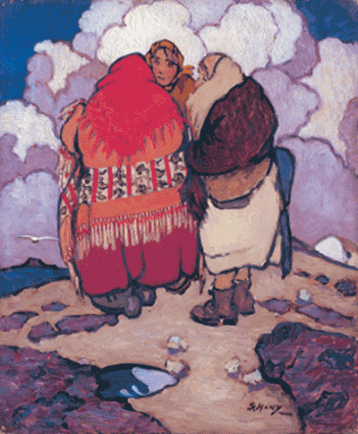 Along with her husband Grace Henry was a founding member of the Dublin Society of Painters which sought to promote young Irish artists. During the 1920s and 1930s she travelled in France and Italy, training under André Lhote, whose students Evie Hone, Mary Swanzy and Mainie Jellett were to bring Cubism to Ireland. However, his influence is not as strong on Grace Henry’s work, which never fully adopts a Cubist style. Grace Henry’s work has often been overshadowed by that of her husband, and the inscription on one of her paintings in the Hugh Lane Gallery reads “Mrs Paul Henry”. However, an examination of their work shows that Grace Henry was the more adventurous of the two – her works are more varied, and show modern influences, such as that of Cubism and Japanese prints. The Henrys exhibited together in St Stephen’s Green Gallery and the Magee Gallery in Belfast, among other venues, up until their formal separation in the early 1930s. Following this, she continued to travel and to paint. Grace Henry was made an honorary member of the Royal Hibernian Academy in 1949 and her work can now be seen in many Irish art institutions.
Along with her husband Grace Henry was a founding member of the Dublin Society of Painters which sought to promote young Irish artists. During the 1920s and 1930s she travelled in France and Italy, training under André Lhote, whose students Evie Hone, Mary Swanzy and Mainie Jellett were to bring Cubism to Ireland. However, his influence is not as strong on Grace Henry’s work, which never fully adopts a Cubist style. Grace Henry’s work has often been overshadowed by that of her husband, and the inscription on one of her paintings in the Hugh Lane Gallery reads “Mrs Paul Henry”. However, an examination of their work shows that Grace Henry was the more adventurous of the two – her works are more varied, and show modern influences, such as that of Cubism and Japanese prints. The Henrys exhibited together in St Stephen’s Green Gallery and the Magee Gallery in Belfast, among other venues, up until their formal separation in the early 1930s. Following this, she continued to travel and to paint. Grace Henry was made an honorary member of the Royal Hibernian Academy in 1949 and her work can now be seen in many Irish art institutions.



 Maya Kulenovic’s works have been exhibited in over twenty solo exhibitions and more than forty group shows and art fairs in Canada, the UK, the Netherlands, USA, Ireland, Japan, South Korea, and Turkey. Her paintings can be found in significant collections around the world.
Maya Kulenovic’s works have been exhibited in over twenty solo exhibitions and more than forty group shows and art fairs in Canada, the UK, the Netherlands, USA, Ireland, Japan, South Korea, and Turkey. Her paintings can be found in significant collections around the world.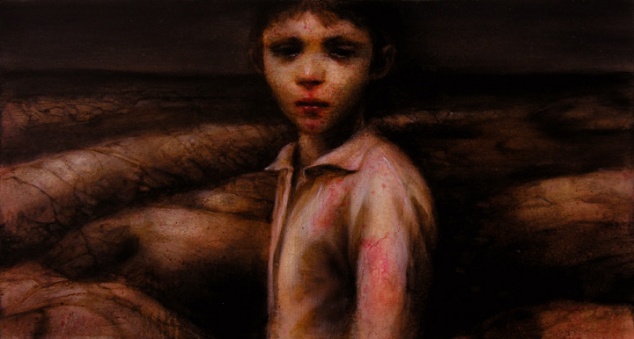
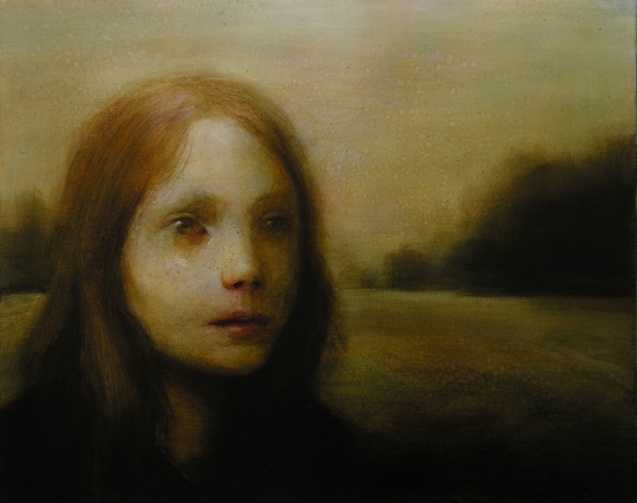


 Jack Butler Yeats was born in London in 1871, the youngest son of Irish portraitist John Butler Yeats,
Jack Butler Yeats was born in London in 1871, the youngest son of Irish portraitist John Butler Yeats,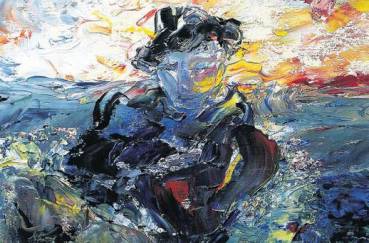
 The Irish landscape artist, portrait and figure painter
The Irish landscape artist, portrait and figure painter
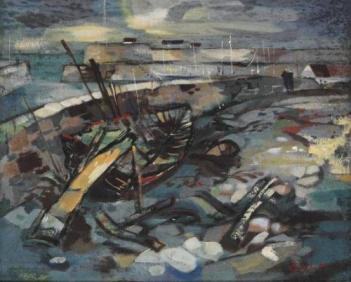 One of Ireland’s foremost landscape artists and still-life painters, George Campbell was born in County Wicklow and received his schooling in Dublin. His mother was the noted artist Gretta Bowen. George Campbell started painting in Belfast in 1941, partly as a reaction to the wartime bombing of the city. He first exhibited in 1944, alongside his friend Gerard Dillon, with whom he shared painting trips to Connemara. He first showed at the Royal Hibernian Academy (RHA) in 1948, in company with Dillon and Daniel O’Neill, and continued to show at the RHA over the next 30 years.
One of Ireland’s foremost landscape artists and still-life painters, George Campbell was born in County Wicklow and received his schooling in Dublin. His mother was the noted artist Gretta Bowen. George Campbell started painting in Belfast in 1941, partly as a reaction to the wartime bombing of the city. He first exhibited in 1944, alongside his friend Gerard Dillon, with whom he shared painting trips to Connemara. He first showed at the Royal Hibernian Academy (RHA) in 1948, in company with Dillon and Daniel O’Neill, and continued to show at the RHA over the next 30 years. Campbell’s paintings appeared in many exhibitions during his lifetime. He had his first showing at Belfast’s Mol Gallery in 1944, then in 1946 he exhibited at Waddington Galleries in Dublin – the first event in a long association with the art dealer Victor Waddington. His artworks also showed at the Ritchie Hendriks Gallery, Dublin, the Tom Caldwell Gallery, and at the IELA, the Oireachtas, and the water Colour Society of Ireland (WCSI). The Northern Irish Council for the Encouragement of Music and the Arts (CEMA) sponsored a number of solo exhibitions for Campbell in 1949, 1952 and 1960, being then replaced by the Arts Council of Northern Ireland for one-man shows in 1966 and 1972. George Campbell’s pictures are represented in most major public and private Irish collections of art.
Campbell’s paintings appeared in many exhibitions during his lifetime. He had his first showing at Belfast’s Mol Gallery in 1944, then in 1946 he exhibited at Waddington Galleries in Dublin – the first event in a long association with the art dealer Victor Waddington. His artworks also showed at the Ritchie Hendriks Gallery, Dublin, the Tom Caldwell Gallery, and at the IELA, the Oireachtas, and the water Colour Society of Ireland (WCSI). The Northern Irish Council for the Encouragement of Music and the Arts (CEMA) sponsored a number of solo exhibitions for Campbell in 1949, 1952 and 1960, being then replaced by the Arts Council of Northern Ireland for one-man shows in 1966 and 1972. George Campbell’s pictures are represented in most major public and private Irish collections of art.
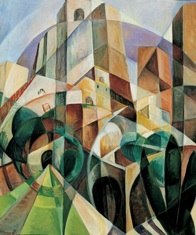 It
It  The Irish equestrian artist and horse portrait painter Peter Curling was born in Waterford in 1955. His exceptional talent as a teenage artist led to his first exhibition in the racing centre of Lambourn at the age of 14, followed by sell-out shows in Dublin.
The Irish equestrian artist and horse portrait painter Peter Curling was born in Waterford in 1955. His exceptional talent as a teenage artist led to his first exhibition in the racing centre of Lambourn at the age of 14, followed by sell-out shows in Dublin. Peter Curling had his first London solo exhibition at the Tryon Gallery in 1978 and has shown there regularly ever since. His paintings of horses have also been exhibited in Lexington, Saratoga and New York. In 1992 he had a very successful exhibition in Dublin at Jorgensen Fine Art.
Peter Curling had his first London solo exhibition at the Tryon Gallery in 1978 and has shown there regularly ever since. His paintings of horses have also been exhibited in Lexington, Saratoga and New York. In 1992 he had a very successful exhibition in Dublin at Jorgensen Fine Art. The Irish landscape artist and portrait painter Frank McKelvey was born in Belfast in 1895. Initially a poster designer, he studied drawing and painting at the Belfast School of Art where he won the Charles Brett prize for figure drawing in 1912.
The Irish landscape artist and portrait painter Frank McKelvey was born in Belfast in 1895. Initially a poster designer, he studied drawing and painting at the Belfast School of Art where he won the Charles Brett prize for figure drawing in 1912. Frank McKelvey’s paintings were shown at various exhibitions during his lifetime, including: the Glasgow Institute of Fine Arts; the Belfast Museum and Art Gallery; the exhibition of Irish art in Brussels (1930); the Hackett Galleries, New York; Ulster House, London; Contemporary Irish Art exhibition in Aberystwyth; Royal Ulster Academy; Royal Hibernian Academy; the Oireachtas; solo shows at Locksley Hall in Belfast, Victor Waddington Galleries in Dublin and Ulster House in London. During his career, McKelvey was thought of as being on the same artistic level as the landscape artists Paul Henry and James Humbert Craig. However, McKelvey was also a prolific and skilful portraitist, painting the portraits of a wide range of subjects including: thirteen US Presidents with roots in Ulster. He also executed a number of marine and naval paintings.
Frank McKelvey’s paintings were shown at various exhibitions during his lifetime, including: the Glasgow Institute of Fine Arts; the Belfast Museum and Art Gallery; the exhibition of Irish art in Brussels (1930); the Hackett Galleries, New York; Ulster House, London; Contemporary Irish Art exhibition in Aberystwyth; Royal Ulster Academy; Royal Hibernian Academy; the Oireachtas; solo shows at Locksley Hall in Belfast, Victor Waddington Galleries in Dublin and Ulster House in London. During his career, McKelvey was thought of as being on the same artistic level as the landscape artists Paul Henry and James Humbert Craig. However, McKelvey was also a prolific and skilful portraitist, painting the portraits of a wide range of subjects including: thirteen US Presidents with roots in Ulster. He also executed a number of marine and naval paintings.